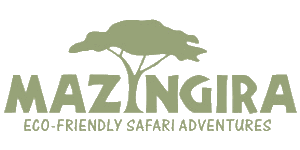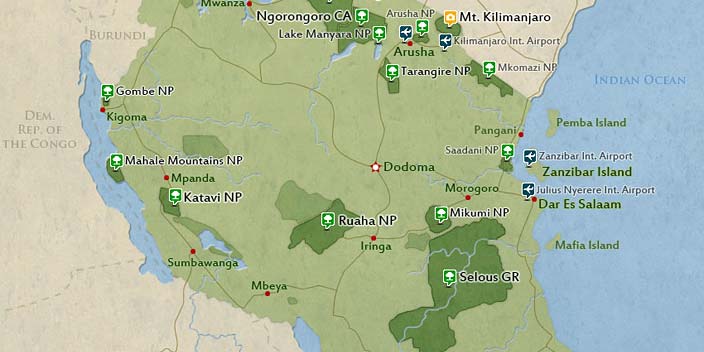
Arrival
Arrival

Day 1
Transfer from Arusha to Tarangire National park
Transfer from Arusha to Tarangire National park
After breakfast, drive to Tarangire National Park for a safari game drive..
Tarangire is one of the best parks in Tanzania, offering extraordinary views. During the dry seasons, the Tarangire River normally becomes a reliable source of water for many animals, providing a permanent source of water.
Tarangire is known and famous for its high concentration of elephants, baobab trees, and beautiful scenery, you can expect to see buffalo, giraffe, zebra, wildebeest, hippo, baboon, and antelope. For birders, Tarangire is home to over 400 species of birds, including rare species such as the greater kudu, wild dog, and fringed oryx.
Predators such as lions, hyenas, cheetahs, jackals, and leopards are also present in the park. Tarangire National Park forms the central annual migration cycle in the Tarangire and Lake Manyara ecosystem, which includes over 25,000 wildebeest and approximately 30,000 zebras. Dinner and overnight at figs campsite.
- Main Destination:
- Tarangire National Park
- Accommodation:
- Budget camping
- Meals & Drinks:

Day 2
Mto wa Mbu to Lake Manyara National Park
Mto wa Mbu to Lake Manyara National Park
After breakfast, drive to Lake Manyara National Park for a safari game drive around the lake’s shores. Manyara National Park is situated to the north of Tanzania, to the steep western wall of the Rift Valley, Manyara is home to an underground water forest which makes it green all year around, it is also part of a world biosphere reserve with an area of 325 kilometers square. The Park is renowned for its tree-climbing lions, olive baboons, herds of elephants, buffaloes, Zebras, Wildebeests, Giraffes, Hippos, and klipspringer not to mention more than 450 species of birds including flocks of flamingos and stocks that can be found in this park. Dinner and overnight will be at Simba A Campsite.
- Main Destination:
- Lake Manyara National Park
- Accommodation:
- Budget camping
- Meals & Drinks:

Day 3
Ngorongoro Highlands to Crater
Ngorongoro Highlands to Crater
After breakfast, depart with lunch boxes, then descend down the crater floor for half day tour. After lunch drive to Arusha, arrive in Arusha in the evening to connect back home or Zanzibar.
Ngorongoro is a multiple land use area where the Maasai people, who are pastoralists, share the same ecosystem with wild animals. The area is part of the Serengeti ecosystem to the north and to the northwest is the Ndutu area where, between December and April, is the best time to see calving wildebeest and zebra.
The Ngorongoro Crater is the world’s largest unbroken, unflooded caldera, the main attraction of Ngorongoro is the crater which was formed after a large volcano exploded and collapsed in on itself and formed a caldera. The caldera is the best place to see many antelopes and the Big 5 up close, but this depends on the season.
- Main Destination:
- Ngorongoro Crater
- Accommodation:
- No accommodation (End of tour)
- Meals & Drinks:



















